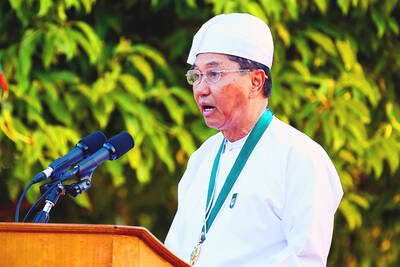Genes from genetically engineered corn have been found in traditional crop strains in Mexico, said a new study that is likely to reignite a bitter controversy over biotech maize.
The paper, by scientists from Mexico, the US and the Netherlands, backs a 2001 probe that sparked a row over the safety of genetically modified (GM) crops.
Green activists say GM crops are a potential hazard, arguing that their genes could spread to related plants through cross-pollination.
Their campaign has helped drive bans on GM crops in some countries, including Mexico, the ancestral home of maize, as corn is also called.
In the 2001 study, published in the prestigious British journal Nature, researchers reported finding transgenes in samples of corn taken from the Sierra Juarez region of Oaxaca.
But this study was blasted for technical inaccuracy and choice of samples. In an exceptional slap, Nature distanced itself from the paper, saying the evidence had not been strong enough to warrant publication.
This damning verdict was underscored by a further study, carried out in 2005 by a different team, that was unable to replicate the results.
But new research now says the original study was right.
A team led by Elena Alvarez-Buylla of the National Autonomous University in Mexico City looked at nearly 2,000 samples from 100 fields in the region from 2001 and 2004, and found that around 1 percent of the samples had genes that had jumped from GM varieties.
“We confirmed that there was contamination in 2001 and also found contamination in 2004, which means that it either persisted in the local maize that we sampled or that it was reintroduced, which is less likely,” Alvarez-Buylla said.
She said the difference between previous studies and her research lay in the samples chosen for gene sequencing and in the molecular technique for decrypting the DNA.
The investigators looked for two specific genes that had escaped from biotech corn and found them in some fields but not in others.
Alvarez-Buylla said the evidence shed stark light on the failure of efforts to shield Mexico from unauthorized GM corn.
The country imposed a moratorium on the planting of transgenic maize in 1998 to protect genetic diversity. It is the home of about 60 traditional domesticated strains, also called landraces, as well as several wild strains.
Transgenic seeds are entering the country, most probably from the US, and getting mixed with local seeds in trade among small farmers, Alvarez-Buylla said.
“It is very hard to avoid gene flow from transgenic maize to non-transgenic maize in Mexico, even though there has been a moratorium,” she said.
“It is really worrying that the government of Mexico has not been efficient enough in biosecurity monitoring,” she said, accusing watchdogs of failing to establish rigorous molecular monitoring that was independent of data provided by biotech giants.
Alvarez-Buylla’s team did not explore the impact of the escaped genes on the native corn, on the local environment or human health, nor did it test whether the foreign genes passed on to progeny plants.
The study appears in the latest issue of Molecular Ecology, a peer-reviewed journal published by Britain’s Blackwell group. It has been endorsed by a lead author of the 2005 paper.
GM crops have had genes inserted into them to produce benefits for farmers. For instance, they exude natural toxins that kill off pests, or are resistant to herbicides, enabling a farmer to spray a field in one go and not kill the crop.

Nauru has started selling passports to fund climate action, but is so far struggling to attract new citizens to the low-lying, largely barren island in the Pacific Ocean. Nauru, one of the world’s smallest nations, has a novel plan to fund its fight against climate change by selling so-called “Golden Passports.” Selling for US$105,000 each, Nauru plans to drum up more than US$5 million in the first year of the “climate resilience citizenship” program. Almost six months after the scheme opened in February, Nauru has so far approved just six applications — covering two families and four individuals. Despite the slow start —

MOGAMI-CLASS FRIGATES: The deal is a ‘big step toward elevating national security cooperation with Australia, which is our special strategic partner,’ a Japanese official said Australia is to upgrade its navy with 11 Mogami-class frigates built by Japan’s Mitsubishi Heavy Industries, Australian Minister for Defence Richard Marles said yesterday. Billed as Japan’s biggest defense export deal since World War II, Australia is to pay US$6 billion over the next 10 years to acquire the fleet of stealth frigates. Australia is in the midst of a major military restructure, bolstering its navy with long-range firepower in an effort to deter China. It is striving to expand its fleet of major warships from 11 to 26 over the next decade. “This is clearly the biggest defense-industry agreement that has ever

DEADLY TASTE TEST: Erin Patterson tried to kill her estranged husband three times, police said in one of the major claims not heard during her initial trial Australia’s recently convicted mushroom murderer also tried to poison her husband with bolognese pasta and chicken korma curry, according to testimony aired yesterday after a suppression order lapsed. Home cook Erin Patterson was found guilty last month of murdering her husband’s parents and elderly aunt in 2023, lacing their beef Wellington lunch with lethal death cap mushrooms. A series of potentially damning allegations about Patterson’s behavior in the lead-up to the meal were withheld from the jury to give the mother-of-two a fair trial. Supreme Court Justice Christopher Beale yesterday rejected an application to keep these allegations secret. Patterson tried to kill her

MILITARY’S MAN: Myint Swe was diagnosed with neurological disorders and peripheral neuropathy disease, and had authorized another to perform his duties Myint Swe, who became Myanmar’s acting president under controversial circumstances after the military seized power from the elected government of Aung San Suu Kyi more than four years ago, died yesterday, the military said. He was 74. He died at a military hospital in the capital, Naypyidaw, in the morning, Myanmar’s military information office said in a statement. Myint Swe’s death came more than a year after he stopped carrying out his presidential duties after he was publicly reported to be ailing. His funeral is to be held at the state level, but the date had not been disclosed, a separate statement from the